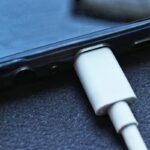
With multiple apps, features, and settings competing for power—most of which you might not even use regularly—battery health can be challenging to maintain. It’s important to understand the terms battery life and battery lifespan. Battery life refers to how long your device can last before you need to recharge it. Your battery’s lifespan is how long your battery will last until it needs to be replaced entirely. Maximizing both battery life and battery lifespan will make your iPhone more reliable and help it last longer, allowing you to enjoy optimal performance for years.
What is iPhone Battery Health?
iPhone Battery Health is a built-in tool in settings that shows how well your battery is holding up. As batteries age over time, they gradually lose their ability to hold a full charge, and this feature helps you track that decline and assess how well your battery is functioning.
Let’s look at the three main sections you’ll find in the Battery Health dashboard:
1. Maximum Capacity
Maximum capacity shows what percentage of your battery’s original capacity remains available. As your battery chemically ages through regular charging and usage, this percentage naturally decreases. A lower maximum capacity means your iPhone will run for fewer hours between charges compared to when it was new. Even newly activated iPhones might display a capacity slightly below 100% capacity, depending on manufacturing and activation timing.
2. Peak Performance Capability
This metric shows whether your battery can deliver enough power during demanding tasks. A healthy battery will display, “Your battery is currently supporting normal peak performance.” If your iPhone has shut down unexpectedly due to battery issues, your phone might activate performance management features to prevent this from happening again. This means your phone might slow down certain tasks to avoid overtaxing the battery. You can turn off this function if you prefer.
3. Optimized Battery Charging
This smart feature learns your charging habits to reduce battery wear. Instead of charging straight to 100% and staying there (which gradually degrades your battery), it will hold at 80% during overnight charging and finish charging fully right before you typically unplug it. When activated, you’ll see a lock screen notification showing when your phone will be fully charged. If you need a full charge sooner, you can simply tap “Charge Now” on the notification. You can turn off or adjust this setting depending on which iPhone model you have.
How to Check Your iPhone’s Battery Health
Checking your iPhone’s battery health is simple. Go to Settings > Battery > Battery Health & Charging. There, you’ll see your battery’s maximum capacity percentage and optimized battery charging options.
If you have an iPhone 15 or later, you have the option to set charging limits (80%-100%). For earlier models, you can simply toggle Optimized Battery Charging on or off. Your iPhone monitors battery usage and suggests ways to improve battery life based on how you use it.
Normal iPhone battery health after 1 year is usually around 88-90%, since batteries generally lose around 1% capacity each month with regular use. Keeping optimization features on helps your battery last longer overall, while battery usage data shows precisely which apps are draining your power the most.
How to Make iPhone Battery Health Last Longer?
With some simple modifications to how you charge and use your phone, you can significantly minimize battery deterioration. These useful tips will help you prolong your iPhone’s battery health and make it last longer each day.
1. Avoid Extreme Temperatures
Exposing your device to high temperatures can cause the battery to wear out and even swell, damaging your iPhone. Heat makes chemical reactions in the battery accelerate, which reduces its capacity permanently. In cold temperatures, you might notice that you have a shorter battery life, but this is only temporary and will improve once the device warms up.
2. Update the iOS
Keep your iPhone up to date with the latest iOS version. Regular updates typically include battery optimization improvements that fix power-hungry bugs. Check for updates in Settings > General > Software Update. You can update wirelessly or by connecting to your computer and updating through iTunes.
3. Manage Background Apps
Background App Refresh allows apps to constantly run in the background, which quickly drains your battery. To manage this, go to Settings > General > Background App Refresh. You can turn it off completely or choose to refresh apps only via Wi-Fi or both Wi-Fi and cellular data, saving plenty of battery life throughout the day.
4. Limit Location Services
Location tracking is a battery drain because certain apps are constantly using your phone’s GPS and other systems. Take a look at which apps are using location tracking services by going to Settings > Privacy > Location Services. Then, consider turning off location access for non-essential apps or changing settings to “While Using” instead of “Always.”
5. Manage Push Notifications
Constant notifications light up your screen regularly, draining your battery all through the day. Evaluate which notifications you actually need by going to Settings > Notifications. There, you can select each app individually, adjust its notification settings based on importance, and turn off notifications for unnecessary apps.
6. Manage Screen Brightness
Another thing that drains your battery is screen brightness. Manually reduce brightness through the Control Center or go to Settings > Display & Brightness and lower the slider. For even better battery life, turn on Auto-Brightness (Settings > Accessibility > Display & Text Size > Auto-Brightness), which adjusts screen brightness based on the amount of natural light.
7. Use Wi-Fi When Possible
Wi-Fi connections use significantly less battery power than cellular data. So, whenever possible, connect to Wi-Fi networks, especially when streaming videos or downloading large files. Try not to use your phone frequently in areas with poor cellular signal, since this can drain the battery.
8. Avoid Complete Battery Drain
Lithium-ion batteries perform best with regular partial charging cycles rather than full discharges. Try to keep your battery percentages between 20% and 80% instead of regularly letting it drain completely. If your battery is running low, turn on Low Power Mode (Settings > Battery) to help extend battery life by reducing features that use a lot of power. This mode automatically turns off once your iPhone reaches 80%.
9. Turn on Optimized Battery Charging
For optimal battery health, enable Optimized Battery Charging (Settings > Battery > Battery Health). This feature learns your charging routine and will charge to 80%, then pause.
Shortly before you typically unplug your phone it will charge to 100%. This reduces battery wear by minimizing the time your iPhone spends fully charged, which can put stress on the battery.
10. Turn Off Unnecessary Features
Animated wallpapers and live photos use more power than still images. That’s why you should choose a simple wallpaper to conserve battery. Features like Live Voicemail on newer iPhones also consume extra power. If you don’t need these features, turn them off for improved battery performance.
11. Turn Off Always On Display
The Always-On feature on iPhone 15 Pro and Pro Max shows a dim version of the lock screen even when your device is locked, continuously using battery power. To preserve battery, disable this feature by going to Settings > Display & Brightness > Always On Display. Most users find this makes a huge difference to everyday battery life.
12. Disable Haptic Feedback
The subtle vibrations you feel when typing consume unnecessary energy. Turning off haptic feedback conserves energy and improves battery life. You can deactivate this feature by opening Settings > Sounds & Haptics > Keyboard Feedback and turning off haptic feedback.
13. Disable “Hey Siri” Detection
Having your iPhone constantly listening for the “Hey Siri” command uses battery life. If you don’t use voice commands frequently, it’s better to turn this feature off. You can still access Siri by pressing and holding the side button. To disable voice detection, go to Settings > Siri > Talk to Siri and change this setting to off.
14. Use Focus Modes
Focus modes help limit notifications by allowing you to determine which apps and contacts can reach you during certain activities or times. This reduces how often your screen lights up and how your phone processes notifications. Go to Settings > Focus to set up custom profiles for work, sleep, driving, or other activities. You can schedule these to activate automatically based on time, location, or app use.
15. Customize AirDrop Settings
While AirDrop is useful for sharing files, photos, and videos, having it actively scan for nearby devices can be battery-draining. This is especially true in crowded places where there are a lot of Apple devices. To save power without turning off AirDrop completely, go to Settings > General > AirDrop and turn off “Bring Devices Together” to stop the constant scanning.
16. Use Official Apple Chargers
Using certified “Made for iPhone” (MFI) chargers and cables protects your battery from potential damage. Non-certified chargers may deliver inconsistent power that can harm your battery over time. While official chargers may cost more initially, they help maintain battery health and can prevent expensive battery replacements later on.
17. Avoid Charging & Using Your iPhone At The Same Time
Using your iPhone while it is charging creates extra heat and puts stress on the battery. Whenever possible, let your phone charge without using it. It’s particularly important to avoid power-intensive activities like gaming or video streaming.
When To Seek Professional Help
Sometimes, no matter how carefully you maintain your iPhone, battery problems still occur. Watch for warning signs like sudden shutdowns, extreme heat during normal use, or battery percentages that drop quickly. If your phone won’t hold a charge for more than a few hours, it’s time to get help from experts. At Cell Phone Hospital, our trained professionals will inspect your iPhone and provide reliable advice about repair options. We handle iPhone battery issues with care, quality parts, and warranties. For reliable iPhone repair, bring your iPhone to us.
Frequently Asked Questions (FAQs)
High temperatures, excessive screen brightness, background app activity, and battery-draining apps can all affect your iPhone battery’s health over time.
An iPhone battery will last approximately 8-20 hours, depending on the iPhone you have and how you use it. Apple estimates that after two years of use, your battery should still maintain about 80% of its original capacity.
We can definitely replace your iPhone battery! We use quality replacement batteries and have the proper tools to fix any battery issues with your iPhone.





